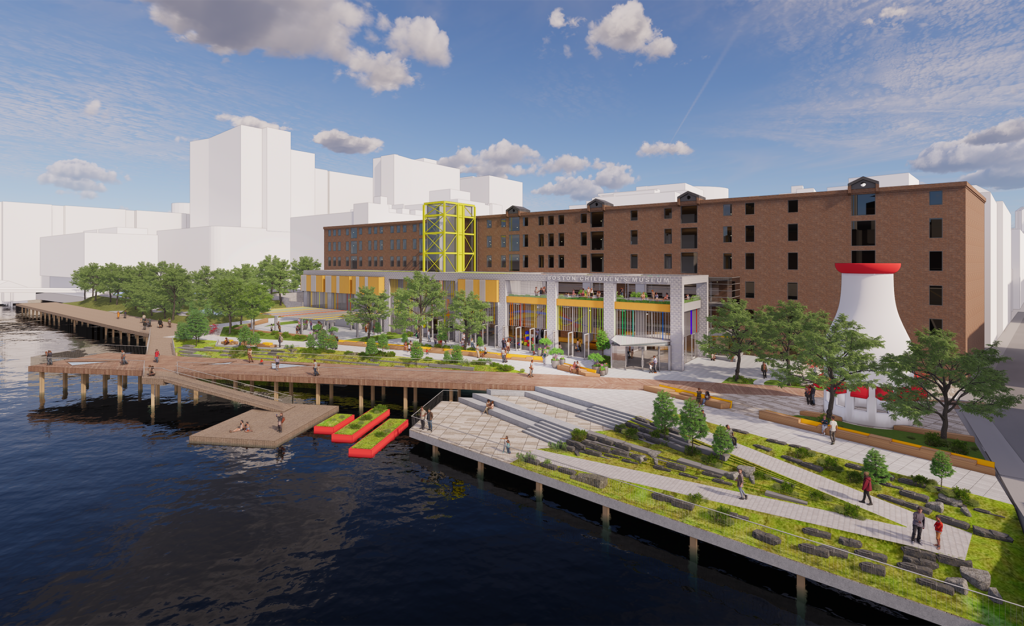
Capital Campaigns, Debt Reduction, and the Waterfront
Over her fifteen-year tenure, Carole Charnow has presided over the strongest financial period in the Museum’s history. Under her expert leadership, Boston Children’s Museum successfully completed two major capital campaigns totaling $75M, retired two thirds of its debt, more than doubled the endowment, and raised major funds for programmatic and capital projects. In addition to the two campaigns, the Museum dramatically increased its earned revenue, doubled its admissions revenue and annual fund, and established a successful annual gala, The Wonder Ball.
Also, during this period, Charnow became a leader in the City’s resiliency efforts, starting in the Museum’s own front yard. A major storm in 2018 produced high tides that flooded adjacent streets, briefly making the Museum an island. Responding to rapidly rising sea levels was no longer optional—it was essential. Over the next seven years the Museum worked with design specialists at Sasaki and with engineering and construction firms—ARUP, VHB, Turner Construction, Haley & Aldrich, and Thornton Tomasetti—to craft a strategy for addressing the Museum’s vulnerabilities. The resultant Masterplan envisions an engaging and resilient waterfront park, that will not only protect the Museum, but also will provide protection for Fort Point and several other Boston neighborhoods. The interior modifications will include elevating the first floor, relocating critical infrastructure, a re-envisioned lobby experience, new exhibit galleries, event spaces, and a roof top garden.
With the support of donors and foundations, the Museum will begin work on Phase 1 of this ambitious plan this Fall, which will ensure that its crucial infrastructure will be protected from major storm surge and increased groundwater levels until at least 2050.
The Museum’s masterplan has been heralded as innovative and groundbreaking by City and State leaders, who have designated the plan a demonstration project for City property owners who aim to make their buildings resilient, while creating beautiful, educational, and engaging public spaces on the Boston Harbor.
